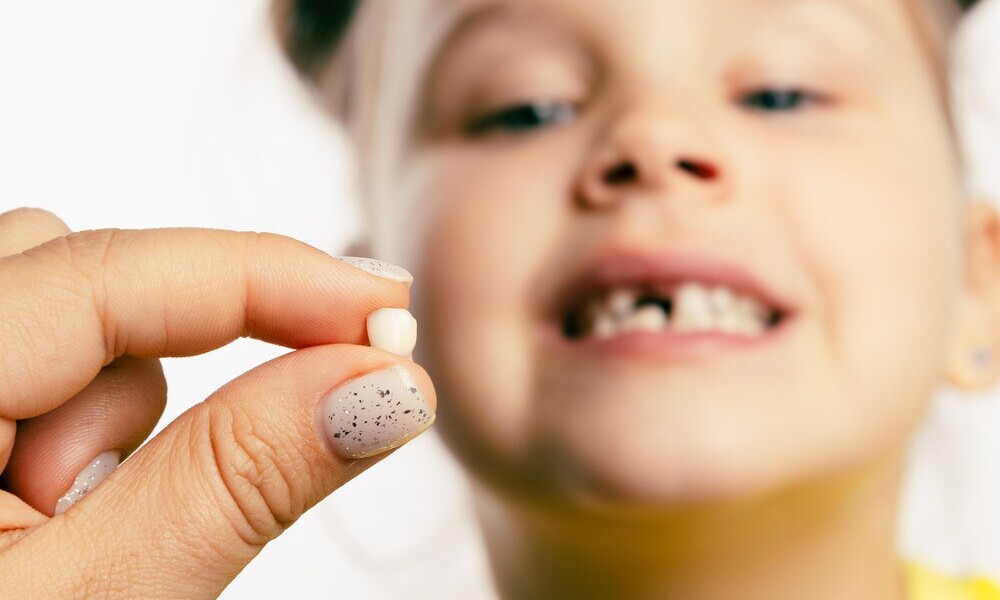That wiggly tooth marks an exciting milestone in your child’s development! The transition from baby to permanent teeth follows fascinating patterns that parents should know about. Smile Buds Pediatric Dentistry & Orthodontics shares essential information to help you confidently navigate this important developmental phase.
Tooth loss timeline
Children typically begin their tooth-losing journey around age 6, though perfectly healthy children may start as early as 4 or as late as 8. The process follows a fairly predictable sequence:
- Front and centre first: Lower central incisors (bottom front teeth) usually lead the way, followed closely by upper central incisors. These teeth generally fall out between ages 6-7.
- Working outward: Lateral incisors (teeth beside the front teeth) typically loosen next, around ages 7-8.
- The waiting game: Many children experience a 1-2 year pause after losing front teeth. This break is entirely normal and gives the jaw time to grow.
- Back to losing: Between ages 9-12, the remaining baby teeth begin to go. First molars and canines (pointy teeth) loosen around ages 9-11, while second molars are usually the last to depart around ages 10-12.
This transformation spans 6-8 years, with most permanent teeth (except wisdom teeth) in place by age 13. Family patterns often influence timing—if you were an early tooth-loser, your child might follow suit.
Biology behind loose teeth
Nature designed an elegant process for this transition. As permanent teeth develop deep in the jawbone, they gradually move upward. This movement triggers specialised cells to dissolve the roots of baby teeth from below—a process called root resorption.
This explains why a naturally lost baby tooth often has little or no root remaining. As dissolution progresses, the tooth becomes increasingly wobbly until it finally detaches, often with minimal bleeding and discomfort.
The emerging permanent tooth usually takes several weeks to months to fully appear after the baby tooth falls out. During this time, you might notice:
- A gap that looks surprisingly large (permanent teeth are wider than baby teeth)
- Slightly swollen or reddish gums around the emerging tooth
- Temporary tenderness or sensitivity in the area
- A brief adjustment period for biting or chewing
Many children experience mild discomfort as teeth loosen and new ones emerge. Cold foods like popsicles or smoothies can provide natural relief. Soft foods might be more comfortable during active transition periods, and a child-appropriate pain reliever can help when necessary.
Normal variations
While the general pattern remains consistent, individual variations abound:
- Double rows: Permanent teeth sometimes emerge before baby teeth fall out, creating temporary “shark teeth” (two rows). This occurs most commonly with lower front teeth and typically resolves naturally as the baby tooth eventually loosens.
- Timing differences: Some children lose teeth earlier or later than average. Family patterns frequently predict whether a child will be an early or late tooth loser.
- Sequence variations: While most children lose bottom teeth before top ones, the reverse can be perfectly standard for some children.
- Multiple loose teeth: Having several teeth loose simultaneously is common, especially with front teeth.
- Color changes: Emerging permanent teeth often appear more yellowish than baby teeth due to their thicker dentin layer beneath the enamel. This natural colour difference doesn’t indicate poor hygiene.
The tooth fairy’s visits represent more than childhood magic—they mark critical developmental milestones. Regular dental check-ups during this transition period allow for professional monitoring and timely intervention if needed.
Name: Smile Buds Pediatric Dentistry & Orthodontics
Address: 3342 Verdugo Rd suite b, Los Angeles, CA 90065
Website: https://www.smilebuds.com/
Phone: (323) 825-8558
